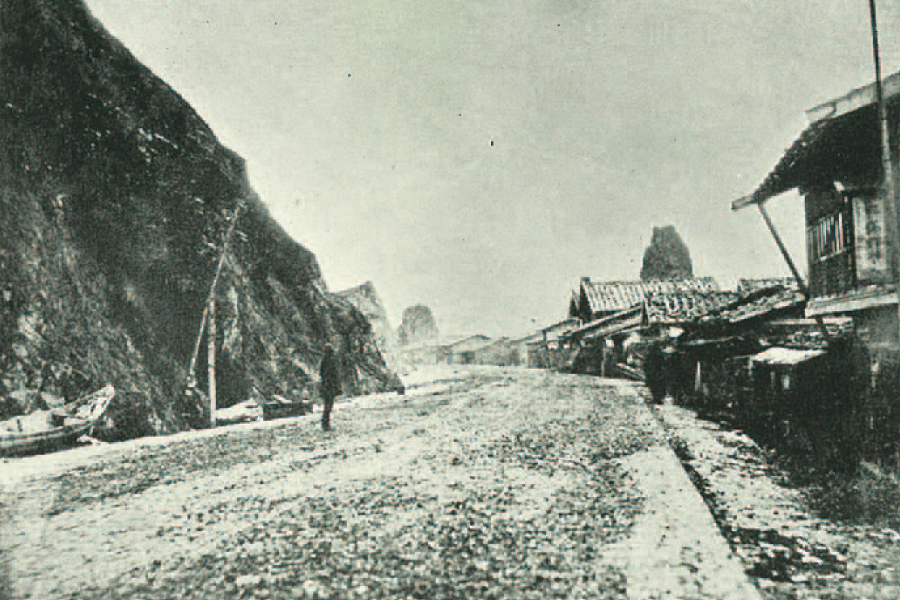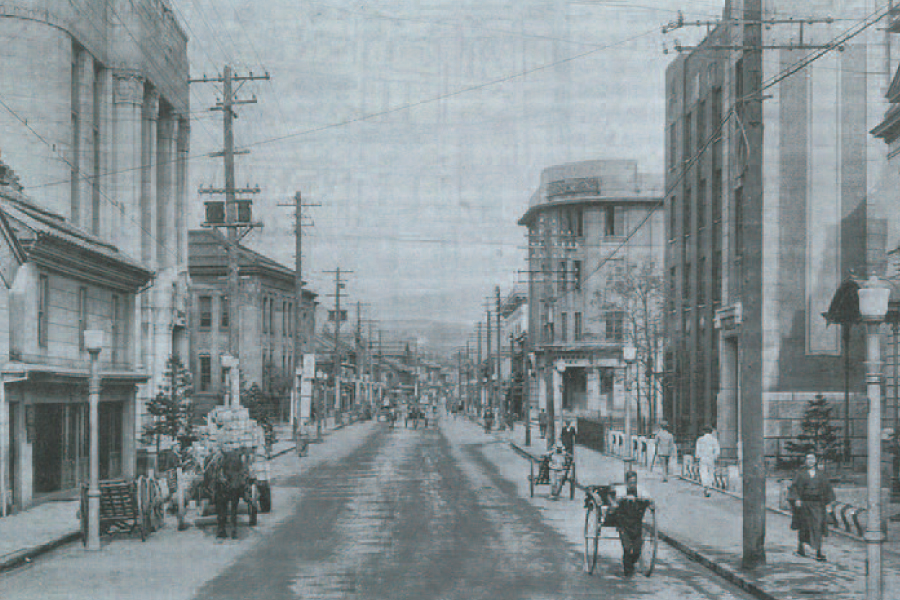
Sakaimachi Street , Post-1881

Intersection of Ironai Street in the Early Showa Period
Numerous merchant houses, warehouses, and banks from the late nineteenth and early twentieth centuries are preserved on Sakaimachi and Ironai Streets. These districts, once the hub of banking and warehousing, are now popular destinations for shopping and sightseeing.
Although Otaru had a deep harbor suitable for shipping, The city’s mountainous terrain left little flat land suitable for building. Land reclamation efforts created additional areas along the coast to accommodate the needs of the expanding port. The new districts of Sakaimachi, Ironai, Kitahama, and Minamihama were established on reclaimed land in 1889, forming the city’s commercial center. At the time, Sakaimachi Street passed along the waterfront, and merchants built stores and warehouses along the street for convenient cargo transfer. By the end of the nineteenth century, the economy in Otaru was booming, and Sakaimachi Street was the commercial center of the city.
Some 25 banks, along with trading companies, opened around Ironai Street, and it became the city’s banking district. In the early twentieth century, Otaru was Hokkaido’s economic center. By the mid-twentieth century, however, Otaru’s economy declined as other ports on Hokkaido’s eastern coast offered more convenient shipping routes to Tokyo. Banks and larger stores moved to Sapporo, and their buildings in Otaru stood empty.
In the late 1970s, a preservation movement took shape to revitalize Otaru’s historical downtown. Over time the area was revitalized, and businesses began opening in the former warehouses. The large Kimura Warehouse was renovated in 1983 by Kitaichi Glass as a retail store and restaurant, drawing visitors. More businesses moved into the historical buildings to create an attractive shopping area. Several former banks are now open to the public as museums and art galleries. The historical appeal of these once-empty buildings played a large part in the city’s economic revival.
more Click here for the map



